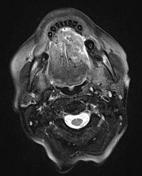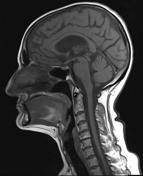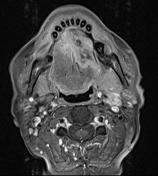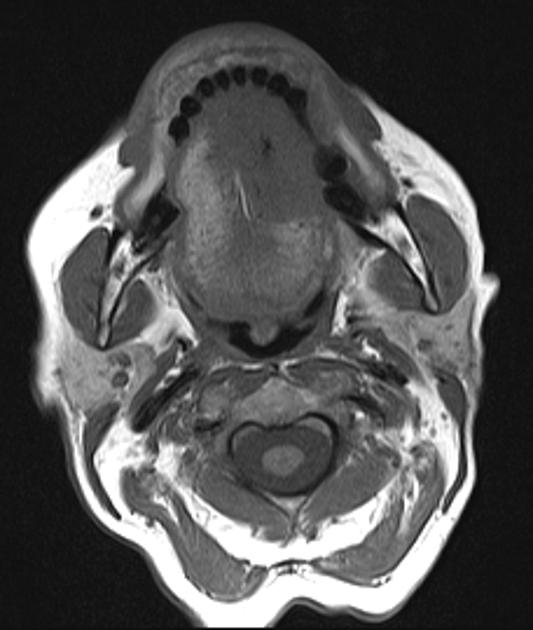




A large oral tongue base mass lesion is seen arising from the left half of the tongue. This tumor involves the entire extent of the left tongue from the tip of the tongue to the level of circumvallate papillae. The tumor predominantly involves the ventral aspect of the tongue with deep invasion into the intrinsic muscles. The tumor anteriorly is seen crossing the midline with involvement of the right tongue. The approximate spread across the midline measures up to 1.2 cm.
- Note: This case has been tagged as "legacy" as it no longer meets image preparation and/or other case publication guidelines.
Case Discussion
Tobacco smoking and alcohol ingestion as major risk factors for squamous cell carcinoma of the tongue. Approximately 20% of all SCCs of the oral cavity arise from the tongue, and approximately 75% of all tongue SCCs arise from the anterior two-thirds of the tongue.




 Unable to process the form. Check for errors and try again.
Unable to process the form. Check for errors and try again.